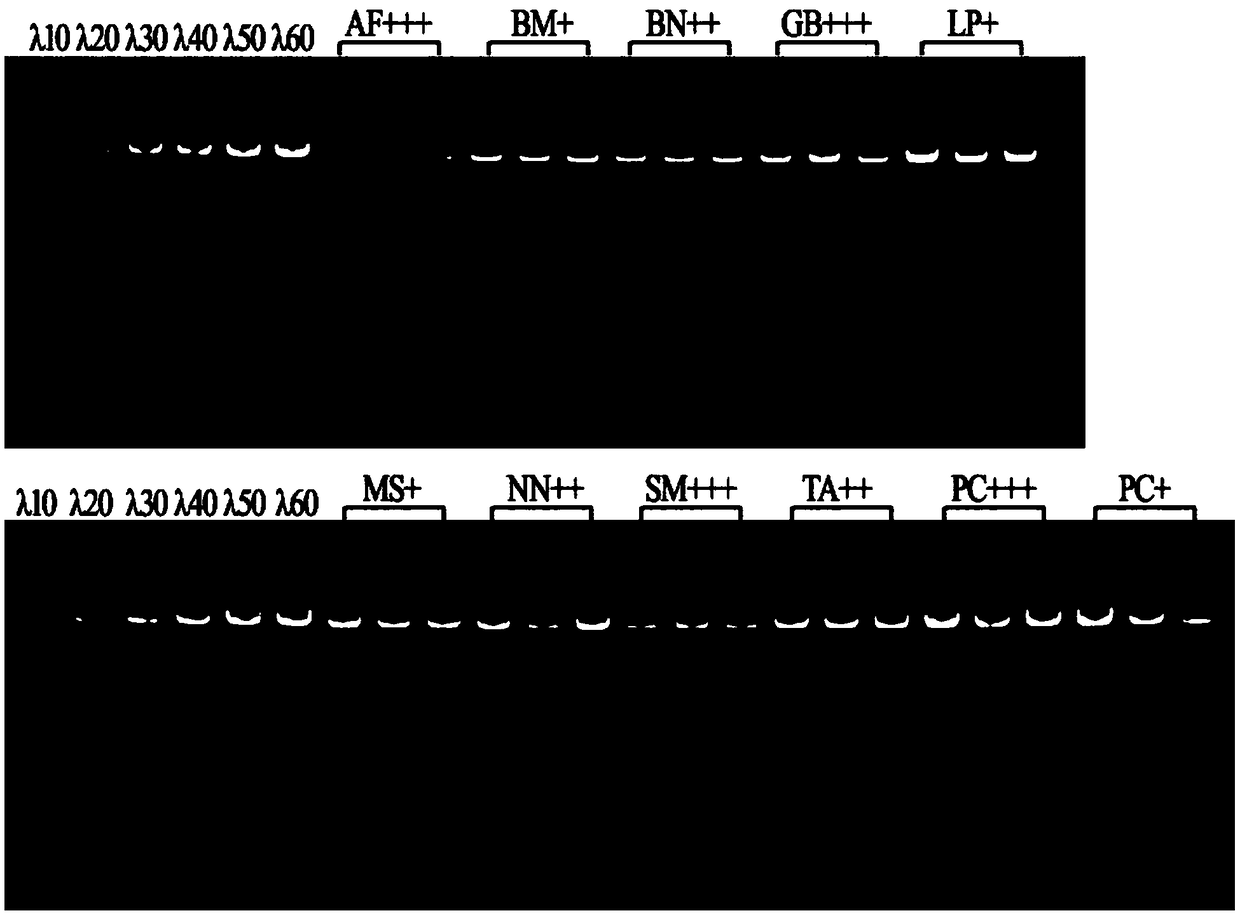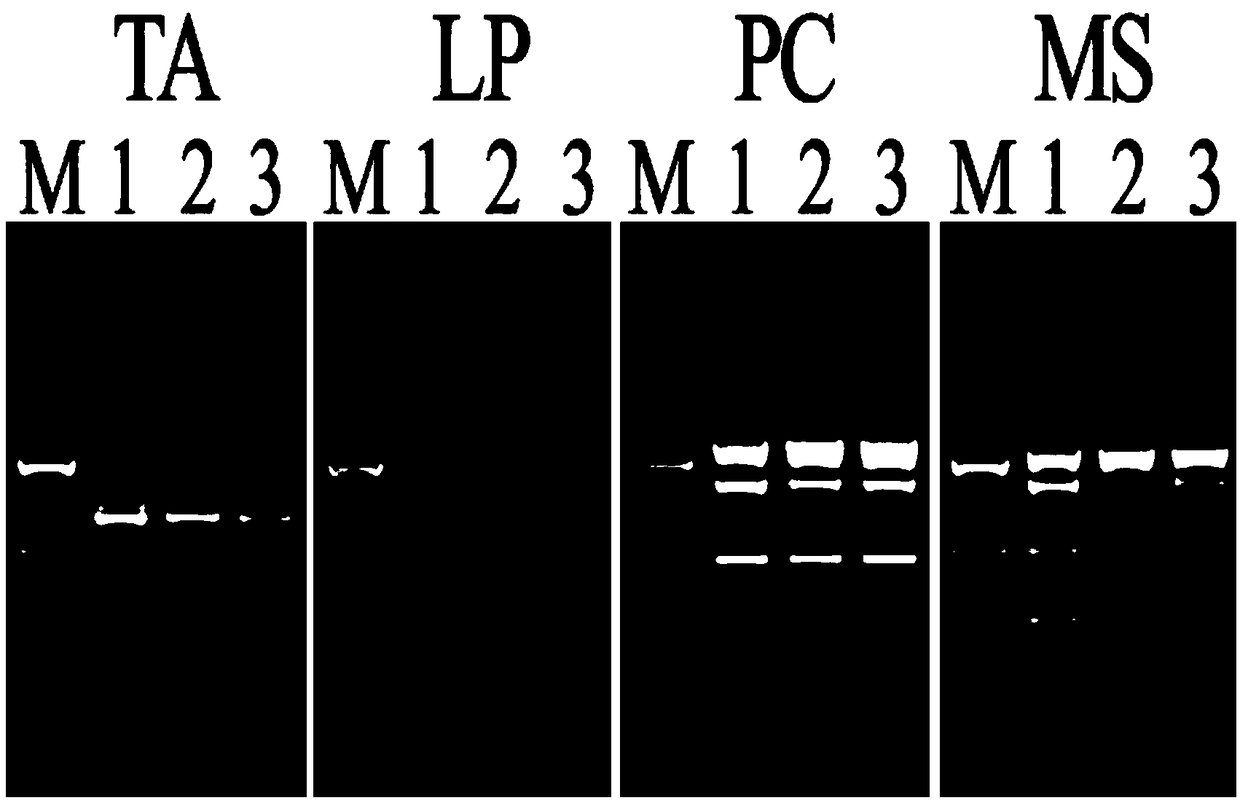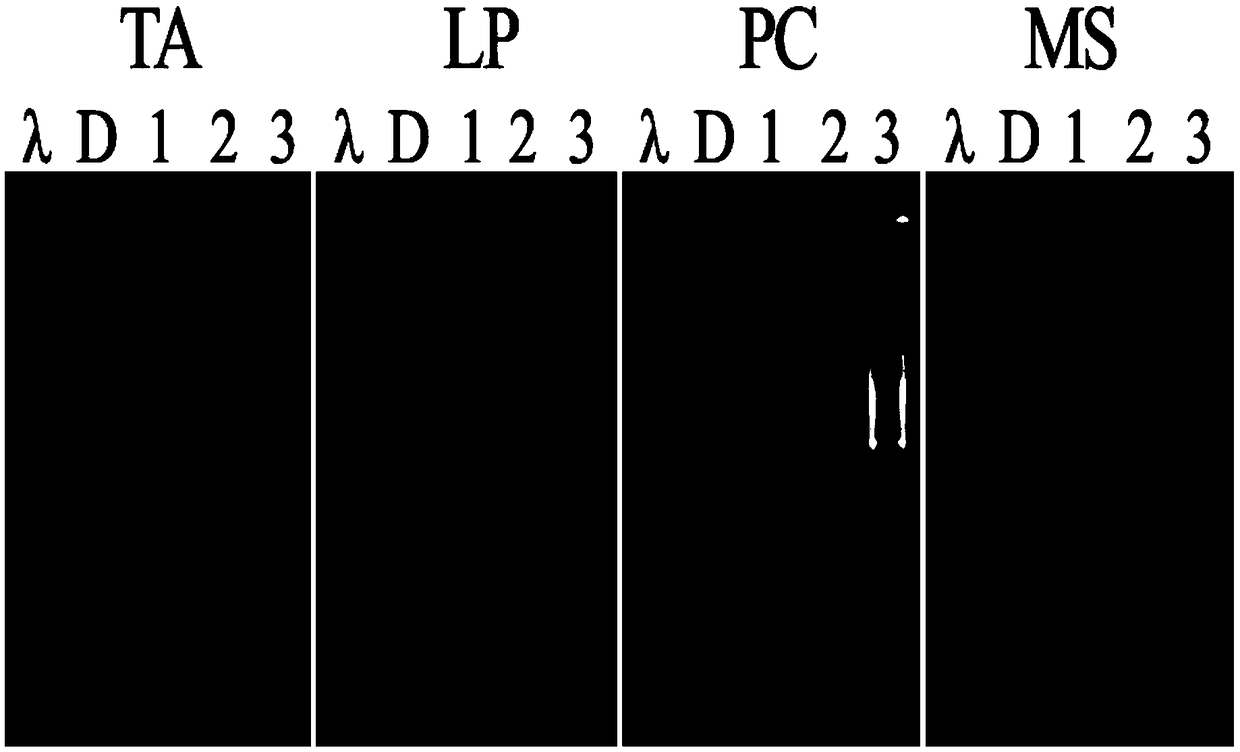Non-toxic extract composition GPR.1 capable of efficiently extracting plant genome DNA and extraction method
A plant genome and extraction technology, applied in the biological field, can solve problems that have not been reported, and achieve the effects of low pollution, high purity, and low cost
- Summary
- Abstract
- Description
- Claims
- Application Information
AI Technical Summary
Problems solved by technology
Method used
Image
Examples
Embodiment 1
[0041] Preparation of extract:
[0042] The preparation of the conventional SDS extraction buffer will not be repeated. The following is the composition of the GPR.1A, GPR.1D and GPR.1E solutions and their respective working concentrations.
[0043] Solution GPR.1A: 3.3% PEG8000, 0.5M NaCl, 0.1M Tris-HCl, 0.05M EDTA, 3.5% PVPP before use, the balance is double distilled water;
[0044] Solution GPR.1D: 18.5% PEG8000, 3.5M NaCl, the balance is double distilled water;
[0045] Solution GNR.1E: 50mM Tris-HCl, 10mM EDTA, 2.5M NaCl, the balance is double distilled water;
[0046] 20mg / mL proteinase K, added separately when using;
[0047] 20% SDS, added separately when using;
[0048] 5M potassium acetate solution, added separately when using.
[0049] The percentage in the above solution refers to the grams of solute contained in 100 mL of the solution.
[0050] The above Tris-HCl is a Tris-HCl solution with pH 8.0.
[0051] The above-mentioned EDTA is an EDTA solution of pH 8.0.
[0052] Extract...
PUM
 Login to View More
Login to View More Abstract
Description
Claims
Application Information
 Login to View More
Login to View More - R&D
- Intellectual Property
- Life Sciences
- Materials
- Tech Scout
- Unparalleled Data Quality
- Higher Quality Content
- 60% Fewer Hallucinations
Browse by: Latest US Patents, China's latest patents, Technical Efficacy Thesaurus, Application Domain, Technology Topic, Popular Technical Reports.
© 2025 PatSnap. All rights reserved.Legal|Privacy policy|Modern Slavery Act Transparency Statement|Sitemap|About US| Contact US: help@patsnap.com



